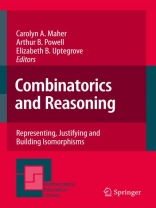Combinatorics and Reasoning: Representing, Justifying and Building Isomorphisms is based on the accomplishments of a cohort group of learners from first grade through high school and beyond, concentrating on their work on a set of combinatorics tasks. By studying these students, the editors gain insight into the foundations of proof building, the tools and environments necessary to make connections, activities to extend and generalize combinatoric learning, and even explore implications of this learning on the undergraduate level.
This volume underscores the power of attending to basic ideas in building arguments; it shows the importance of providing opportunities for the co-construction of knowledge by groups of learners; and it demonstrates the value of careful construction of appropriate tasks. Moreover, it documents how reasoning that takes the form of proof evolves with young children and discusses the conditions for supporting student reasoning.
Jadual kandungan
Introduction, background, and methodology.- The Longitudinal Study.- Methodology.- Foundations of proof building (1989-1996).- Representations as Tools for Building Arguments.- Towers: Schemes, Strategies, and Arguments.- Building an Inductive Argument.- Making Pizzas: Reasoning by Cases and by Recursion.- Block Towers: From Concrete Objects to Conceptual Imagination.- Making connections, extending, and generalizing (1997-2000).- Responding to Ankur’s Challenge: Co-construction of Argument Leading to Proof.- Block Towers: Co-construction of Proof.- Representations and Connections.- Pizzas, Towers, and Binomials.- Representations and Standard Notation.- So Let’s Prove It!.- Extending the study, conclusions, and implications.- “Doing Mathematics” from the Learners’ Perspectives.- Adults Reasoning Combinatorially.- Comparing the Problem Solving of College Students with Longitudinal Study Students.- Closing Observations.- Erratum.












